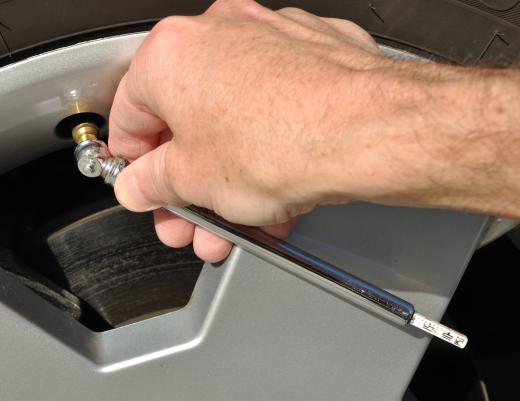An air pressure test is a method to verify that the correct amount of air pressure is present in an object and to check a containment system for leaks in air as a result of a hole or gap. Air pressure tests or hydro tests are most often performed on a variety of objects from heating systems, plumbing fixtures, tanks, and building spaces to vehicle and aerospace components such as tires, hoses, or interior chambers. The air pressure test generally requires either a fluid or some type of air pressure measurement gauge that is specialized for the job that determines the amount of air that is expelled with pressure.
A common type of air pressure test is performed on vehicle tires and hoses, such as those found on autos, bikes, and other personal and commercial craft. A technician places a special air pressure testing gauge against a special valve and the amount of pressure that is behind the air that is expelled is measured. The higher the pressure inside the tire walls or inside of the hoses, the higher the gauge reads. By adding more air, the pressure is safely increased to the required levels for the proper use of the vehicle. In addition, water can be spritzed along the edge of tires to make sure that there are no leaks or cracks present.

Another type of air pressure test is done on the internal structure of a building or home. This air pressure test is performed by a heating and air technician who measures the flow of fresh air through building air ducts and throughout the building. This can be helpful to identify leaks caused by cracks or breaks in the building structure, ductwork, or other spaces where air can escape to the outside. In most cases, a small amount of air leakage is desired in order to create a continual circulation and flow of healthy oxygen-rich air in a home or office environment.

In plumbing or water systems, air pressure tests can be helpful to determine if there are water or sewer leaks present. By pumping safe levels of air into drains, pipes, and tanks, any air that escapes can determine if there is a repair needed to reduce leakage and damage to homes, property, roadways, public water systems, and commercial buildings. Plumbers often use air pressure tests to ensure pipes can handle both the water pressure and the gasses that escape as waste is broken down naturally in drains, pipes, septic systems, and sewer systems.
